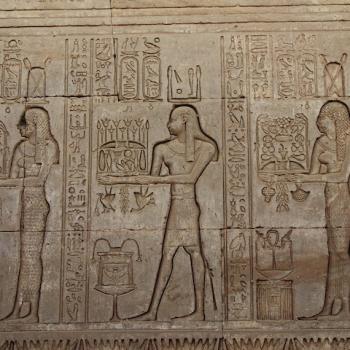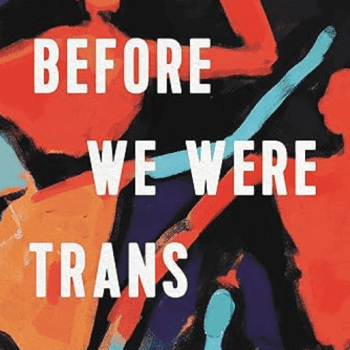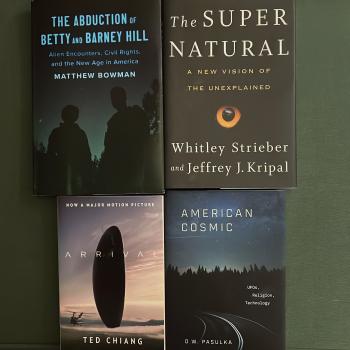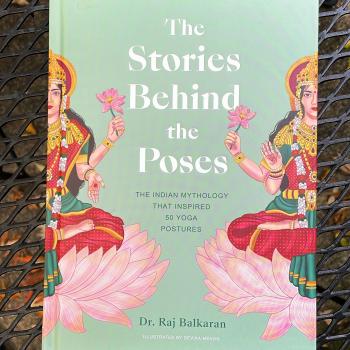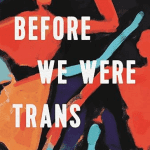The comedic icon Harold Ramis died a little less than two years ago at the far too young age of 69. My introduction to Ramis was in the eighties, through his role as Dr. Egon Spengler in the two Ghostbusters movies, which he co-wrote. He is also remembered fondly by many as the writer-director of Caddyshack (1980), National Lampoon’s Vacation (1983), Groundhog Day (1993), and Analyze This (1999). But critics agree that it is Groundhog Day that stands outs as his “masterpiece.”
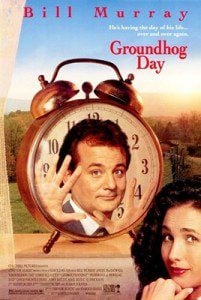 Starring Bill Murray and Andie MacDowell, Groundhog Day is the sixth and final collaboration between Murray and Ramis. One definition of what makes a film, book, song — or any piece of art — a “classic” is that it continues to be a source of wisdom that offers new insights with each repeated encounter. So on this Groundhog Day, I would like to revisit Harold Ramis’s classic film to see what wisdom there might be for us today.
Starring Bill Murray and Andie MacDowell, Groundhog Day is the sixth and final collaboration between Murray and Ramis. One definition of what makes a film, book, song — or any piece of art — a “classic” is that it continues to be a source of wisdom that offers new insights with each repeated encounter. So on this Groundhog Day, I would like to revisit Harold Ramis’s classic film to see what wisdom there might be for us today.
The movie opens on February 1 (Groundhog Day Eve!) with Bill Murray’s character, local TV meteorologist Phil Connors, standing in front of a weather map, saying, “Somebody asked me today, ‘Phil, if you could be anywhere in the world, where would you like to be?’ And I said to him, ‘Prob’ly right here — Elko, Nevada, our nation’s high at 79 today.” You can hear Phil’s discontent with his life in the opening scenes. And after that night’s broadcast, he’s obligated to make the ninety-minute road trip to Punxsutawney, Pennsylvania for his fourth time covering the annual Groundhog Day festivities, an assignment he views as unworthy of his talent.
(I should mention that this year is the 130th Anniversary of the first Groundhog Day. If you do visit, be forewarned that the movie was not filmed in Punxsutawney, but in Woodstock, Illinois because the town square of Woodstock is what Hollywood thought Punxsutawney should look like!)
The premise of the film is that Phil gets trapped in a time loop. The origin and rules of the time loop are never explained. But the upshot is that no matter what Phil does, he wakes up every day, and it is yet-again 6:00 a.m. on February 2, 1993: Groundhog Day. For everyone else, it is as if they are living that February 2 for the first time. But for Phil, the number of times he has lived through this particular February 2 keeps stacking up.
On “Day 1,” when the time loop hasn’t started, Phil’s narcissism is on full display in his sarcastic treatment of everyone he meets. When the owner of the Bed & Breakfast asks him “Will you be checking out today?” He replies snidely, “Chance of departure today: one hundred percent!”
But when Phil wakes up on “Day 2” and begins to realize that surreally, it is still Groundhog Day, the first cracks in his ego begin to show. This time, he nervously responds to the B&B owner, “Chance of departure 80%…75/80.” Phil is having what is sometimes called a “train-wreck event” in which one’s worldview is suddenly and irrevocably challenged. I suspect you can think of parallels in your own life or in the lives of people close to you.
On “Day 3,” one of the many signs that Phil (like the rest of us) is a slow learner in some areas of our lives is that he again accidentally steps — for the third day in a row — into the same large puddle. Feeling demoralized, Phil begins to despair. That night, while attempting to drown his sorrows in a local bowling alley bar, Phil says, “I was in the Virgin Islands once. I met a girl. We ate lobster, drank piña coladas. At sunset, we made love like sea otters. That was a pretty good day. Why couldn’t I get that day over, and over, and over.” It’s easy to be your best self on the beach, but the challenge is everyday life.
Suddenly, Phil realizes that if there’s no tomorrow, then there are no consequences. Thus begins many days of hedonistic hijinks. But eventually Phil tires of adolescent pursuits, and even the most outrageous options begin to seem monotonous because he has tried them all multiple times. Phil’s postmodern “Pilgrim’s Progress” continues through a few more stages. He even tries both killing himself and taking the famous groundhog, Punxsutawney Phil, down with him to see if the critter is the source of his travails. But every time, he wakes up in the same bed, in the same room, and the world has reset itself to 6:00 a.m. on February 2.
Eventually, Phil begins a prolonged pursuit of self-improvement: he starts practicing generosity (giving money each day to the homeless man he had ignored on so many previous versions of the same day), he starts reading books, taking piano lessons, learning French — and even learning to ice sculpt. Admittedly, these pursuits are at first a cynical attempt to win the affections of Phil’s producer, Rita, played by Andie MacDowell. But Phil is changed in the process.
In perhaps the most profound part of the film, Phil comes to befriend that homeless man mentioned earlier — only to discover devastatingly that even with unlimited time and chances, he is unable to save the homeless man’s life. Phil tries countless changes to how he approaches the day and every possible medical interventions, but he is never able to prevent that one homeless man from dying each night. There is a limit to what any of us can accomplish, and everyone can’t be saved.
Ultimately, though, Groundhog Day is a comedy, not a tragedy. And when Phil stops trying so hard to impress Rita, and lets her experience for herself the person he has become, he is able to break out of his old habitual ways of being in the world. And this time when he wakes up in the morning, at long last, it is February 3.
So how long was Phil stuck in the time loop? How long did it take him to learn the lessons he needed? The film doesn’t say explicitly, but Ramis’s own estimation from all the clues in the film is something like “30 or 40 years.” That’s approximately 10,000 – 15,000 Groundhog Days in a row! On one hand, that feels like a lot. On the other hand, as someone in his late thirties, there are lessons that it has taken me close to forty years to learn — and there are many lessons I have yet to master. Can you relate? What were the life lessons that you just didn’t get until your 20s or 30s or 40s, and beyond? And which patterns are you still stuck in?
Now, there are many possible lenses through which to view this film and correspondingly our own lives. One, from the nineteenth-century Danish philosopher, Søren Kierkegaard is to see Phil as progressing through the stages of the aesthetic, ethical, and religious. Phil’s early adolescent rebellion of “no consequences!” epitomizes the hedonistic stage of the aesthetic, who only cares about their own pleasure. And the self-improvement regimes, which have many positive results but culminate in facing his mortality (the limitations on what we can do to help ourselves and others) is an example of Kierkegaard’s ethical stage. Finally, Phil passes into the religious stage, which in this case is in many ways Daoist: only when he stops pursuing his love interest so selfishly, cynically, and forcefully — and instead simply is his natural, evolving self — is he able to authentically connect with another human being.
Related to Daoism, there are many significant Buddhist themes in the film, which isn’t surprising since Harold Ramis is married to a Buddhist — and calls himself, while not fully Buddhist, at least“Buddh-ish.” Fascinatingly, as detailed on the DVD special feature interviews, spiritual groups ranging from Hasidic Jews to the Yoga community responded enthusiastically to the film. Many people in the therapeutic community also saw connections: the repetition in Groundhog can be seen as the “perfect metaphor for psychoanalysis: keep revisiting the same material with increasing insight.”
Along those lines, remember how the film began? It’s “Groundhog Day Eve” and Bill Murray’s character is standing in front of a weather map saying, “Phil, if you could be anywhere in the world, where would you like to be? Prob’ly…Elko, Nevada, our nation’s high at 79 today.” But after spending thirty- to forty-years worth of Groundhog Days in Punxsutawney, PA (where he was dreading spending even one day), when he finally wakes up and it is the day after Groundhog Day, he turns to Rita and says, “Today is tomorrow! Let’s live here. We’ll rent to start.”
As the proverb says,“Wherever you go, there you are.” Wherever you go, if you aren’t working through your “karma” — your emotional baggage — then you’ll likely find yourself slipping back into old habitual patterns that create further suffering for yourself and those around you. But there are ways of increasingly escaping self-involvement and beginning to connect more authentically with yourself, with others, and with this world. There are many different paths to getting there: from Buddhist to Pagan, Humanist to Muslim, and Jewish to Christian. Regardless of your choice, it takes commitment and work.
Relatedly, part of what is fascinating about the “thought experiment” that is the film Groundhog Day is that only Phil changes. Everyone else is the same. But as Phil changes his piece of the puzzle, his actions have powerful ripple-effects. We can’t change everything. But the film invites us to ask whether we are changing that which is in our control, starting with how we are in the world and how we treat others.
Finally, it is no coincidence that the film is set on Groundhog Day. Groundhog Day is our secular version in the U.S. of what the ancient, pagan, Earth-centered traditions call Imbolc, the day precisely halfway between Winter Solstice (“the longest night of the year”) and Spring Equinox, the first day of spring, when there will be equal amounts of darkness and sunlight. Groundhog Day plays with that turning point on the Wheel of the Year with the question of whether Punxsutawney Phil will see his shadow. In the film, Bill Murray’s “everyman” meteorologist — also named Phil! — is faced metaphorically with that same question: on Groundhog Day (on Imbolc), will he (will we?!) turn toward our shadow (our unconscious, habitual ways of being in the world) — or will we choose to live a more intentional, conscious life? Regardless of what others around you are doing, are you ready to change your piece of the puzzle? As we move toward the midpoint between winter and spring, what would it look like in your life to move toward kindness, generosity, and connection? What might such a choice unlock in the days, weeks, and years ahead?
The Rev. Dr. Carl Gregg is a trained spiritual director, a D.Min. graduate of San Francisco Theological Seminary, and the minister of the Unitarian Universalist Congregation of Frederick, Maryland. Follow him on Facebook (facebook.com/carlgregg) and Twitter (@carlgregg).
Learn more about Unitarian Universalism: http://www.uua.org/beliefs/principles





